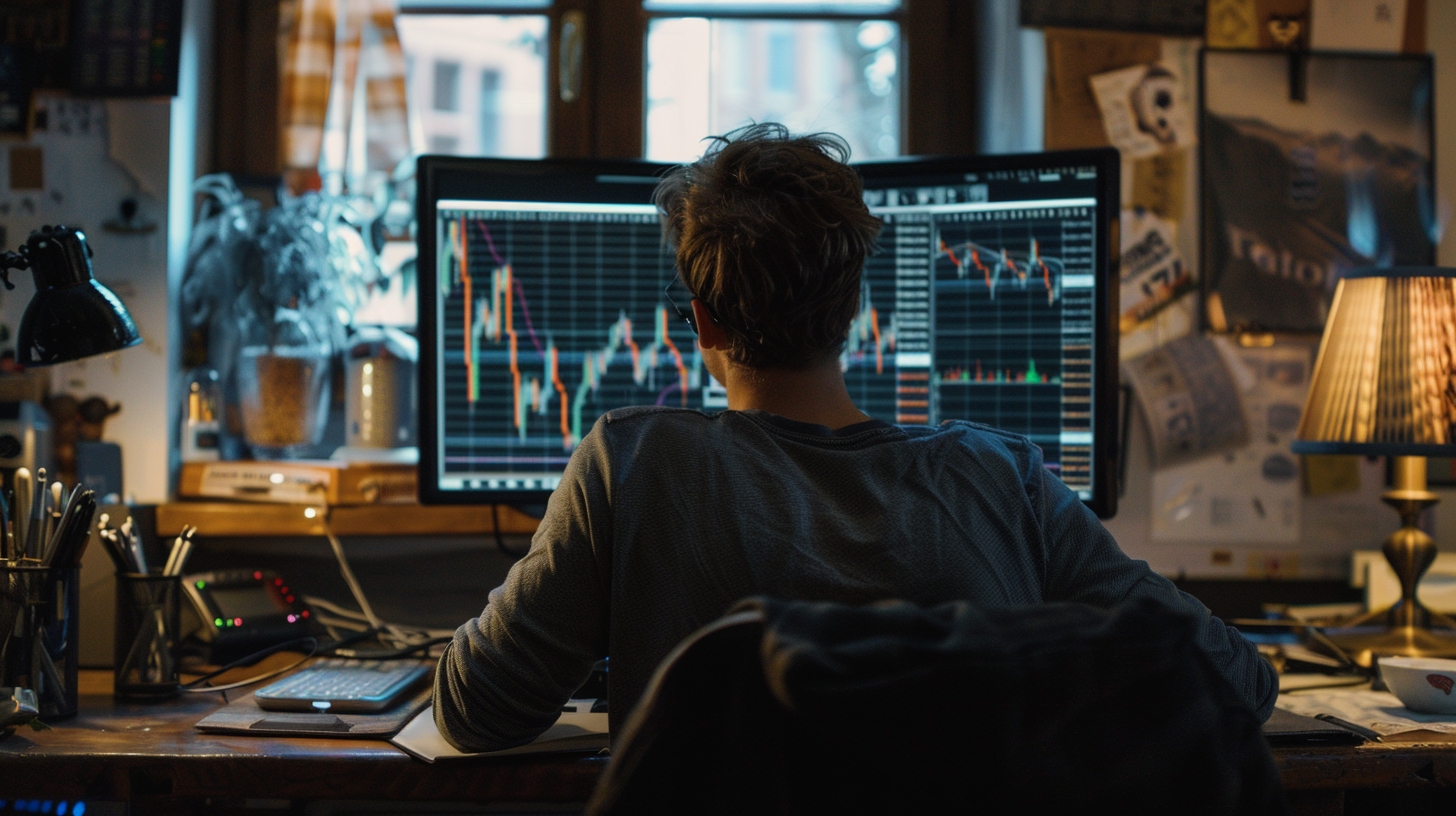Intraday Trading

What Is Intraday?
Intraday refers to actions or events occurring within a single trading day. In the financial sector, it is commonly used to describe securities that are actively traded on the market during standard business hours, including stocks and exchange-traded funds (ETFs).
The term also highlights the highest and lowest prices that an asset reaches throughout the trading day. These intraday price fluctuations are crucial for short-term or day traders who aim to execute multiple trades within the same session. These traders close all their positions by the end of the trading day.
The Basics of Intraday Trading
Intraday trading often refers to the new highs and lows achieved by a security within a single trading session. For instance, "a new intraday high" signifies that the security has reached its highest price of the day compared to other prices during the session. Occasionally, an intraday high can coincide with the closing price.
Traders closely monitor intraday price movements using real-time charts to capitalize on short-term fluctuations. These traders typically utilize intraday charts with intervals of one, five, 15, 30, and 60 minutes. Intraday scalping, a high-speed trading strategy, commonly employs one- and five-minute charts. Other intraday strategies might use 30- and 60-minute charts for trades held over several hours. While intraday traders may hold positions longer, they still face high risks.
Scalping involves making numerous trades per day to profit from small price changes in a stock.
Volume Weighted Average Price (VWAP) orders are frequently used intraday to enhance trade execution efficiency by exposing an order to various prices throughout the trading day. VWAP provides an average price that securities trade at during the session.
Intraday Trading Strategies
Traders employ a variety of intraday strategies, including:
- Scalping: Generating multiple small profits from minor price changes throughout the day.
- Range Trading: Making buy and sell decisions based on support and resistance levels.
- News-Based Trading: Taking advantage of the increased volatility surrounding news events.
- High-Frequency Trading: Using advanced algorithms to capitalize on minor or short-term market inefficiencies.
According to Robinhood, "What is Intraday?", all these strategies hinge on timing trades based on price movements within a single day, often occurring within minutes of each other.
Advantages and Disadvantages of Intraday Trading
Advantages
- Protection from Overnight Risks: Positions are not influenced by negative overnight news that can significantly impact security prices, such as key economic reports, earnings announcements, and broker upgrades or downgrades occurring outside regular market hours.
- Tight Stop-Loss Orders: Traders can use tight stop-loss orders to limit losses from long positions by setting a specific stop price.
- Increased Leverage: Intraday trading allows for greater access to margin, enhancing leverage.
- Enhanced Learning Opportunities: The high frequency of trades provides traders with ample opportunities to learn and refine their strategies quickly.
Disadvantages
- Frequent Commission Costs: The high number of trades results in increased commission costs, which can erode profit margins.
- Limited Asset Options: Some assets, such as mutual funds, are not suitable for intraday trading.
- Time Constraints: There may not be enough time for a position to gain profit before it needs to be closed.
- Rapid Accumulation of Losses: Losses can quickly accumulate, especially if trades are financed with margin.
Pros:
- Positions are protected from overnight news and broker actions.
- Tight stop-loss orders can safeguard positions.
- Regular traders benefit from increased leverage.
- Frequent trades enhance learning experiences.
Cons:
- Multiple trades result in higher commission costs.
- Certain assets, like mutual funds, are not viable for intraday trading.
- Insufficient time for positions to realize profits.
- Losses can rapidly increase, particularly with margin financing.
Intraday Pricing and Mutual Funds
Mutual funds are not suitable for intraday trading. These funds are intended for long-term investors and can only be purchased or sold through a broker or the fund's investment company. The price of a mutual fund is determined once at the end of each trading day, known as the net asset value (NAV). This NAV reflects the fund's asset movements throughout the day, minus its liabilities, calculated on a per-share basis.
Therefore, mutual funds do not provide intraday pricing, despite the ongoing fluctuation in market value of their assets and the continuous buy and sell decisions made by their managers. In contrast, exchange-traded funds (ETFs), which are similar but passively managed, are priced based on their intraday market value during the trading session.
Real-World Example of Intraday
Stock price movements are tracked throughout the trading day and summarized at its close. For instance, on April 4, 2022, Apple Inc. (AAPL) shares opened at $174.57 and closed at $178.44. Within that day, the shares dipped to an intraday low of $174.44 and reached an intraday high of $178.49, as shown in the "day's range" next to the closing price.
Day traders and technical analysts monitoring Apple would examine these price movements to identify patterns or significant gaps, which are sudden price jumps without any trading occurring in between.
How Do Day Traders Make Money?
Day traders earn profits by capitalizing on small price movements of assets throughout the day. They frequently use high leverage to amplify their trades. This approach carries significant risk and can result in substantial gains or large losses, depending on the traders' positions and the leverage involved.
What Are the Risks of Intraday Trading?
The biggest risk in intraday trading is the potential for significant financial losses. Due to the high volatility of prices, day trading is inherently risky. Achieving long-term profits can be particularly challenging, especially for novice or inexperienced traders.
Why Can't Day Traders Trade Mutual Funds?
Day traders cannot trade mutual funds because their prices are only determined at the end of the trading day. Without intraday price fluctuations, day traders have no opportunities to make trades based on short-term movements. Mutual funds are intended for long-term investors and can only be bought or sold through brokers or the fund's investment company.
The Bottom Line
Intraday refers to securities that trade during regular business hours and the fluctuations in their prices throughout the day. Intraday traders aim to profit from these price movements by executing trades based on small changes.
Intraday trading strategies include scalping, range trading, and news-based trading. Each strategy has its advantages and disadvantages. Traders can use tight stop-loss orders to protect their positions and often have increased access to leverage. Their positions are not affected by overnight news that could alter prices. However, losses can accumulate quickly, particularly if trades are financed with margin, and frequent trading can lead to high commission costs that reduce potential profits.


 Русский
Русский  Español
Español  Deutsch
Deutsch  Indonesian
Indonesian  Português
Português  Français
Français  Nederlands
Nederlands  Italiano
Italiano  中文
中文  عربي
عربي  Türkçe
Türkçe 

